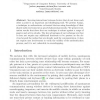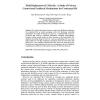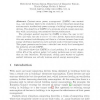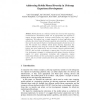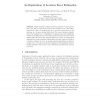HUC
2007
Springer
14 years 7 months ago
2007
Springer
Abstract. This study has created the Playful Tray that adopts Ubicomp and persuasive techniques into play-based occupational therapy for reducing poor eating behavior in young chil...
HUC
2007
Springer
14 years 7 months ago
2007
Springer
Securing interactions between devices that do not know each other a priori is an important and challenging task. We present Amigo, a technique to authenticate co-located devices us...
HUC
2007
Springer
14 years 9 months ago
2007
Springer
In this paper we present a new approach for cooperation between mobile smart objects and projector-camera systems to enable augmentation of the surface of objects with interactive ...
HUC
2007
Springer
14 years 9 months ago
2007
Springer
Spontaneous interaction is a desirable characteristic associated with mobile and ubiquitous computing. The aim is to enable users to connect their personal devices with devices en...
HUC
2007
Springer
14 years 9 months ago
2007
Springer
We describe the design of privacy controls and feedback mechanisms for contextual IM, an instant messaging service for disclosing contextual information. We tested our designs on I...
HUC
2007
Springer
14 years 9 months ago
2007
Springer
HUC
2007
Springer
14 years 9 months ago
2007
Springer
Context-aware power management (CAPM) uses context (e.g., user location) likely to be available in future ubiquitous computing environments, to effectively power manage a building...
HUC
2007
Springer
14 years 9 months ago
2007
Springer
Mobile phones are a widely-available class of device with supporting communications infrastructure which can be appropriated and exploited to support ubicomp experiences. However m...
HUC
2007
Springer
14 years 9 months ago
2007
Springer
Abstract. Many existing localization systems generate location predictions, but fail to report how accurate the predictions are. This paper explores the effect of revealing the er...
HUC
2007
Springer
14 years 9 months ago
2007
Springer
Abstract. While the user-centered design methods we bring from humancomputer interaction to ubicomp help sketch ideas and refine prototypes, few tools or techniques help explore di...

